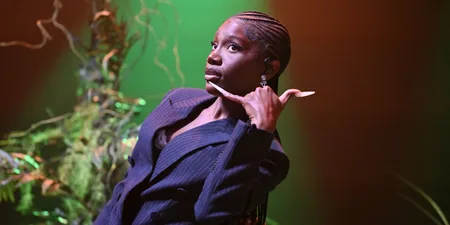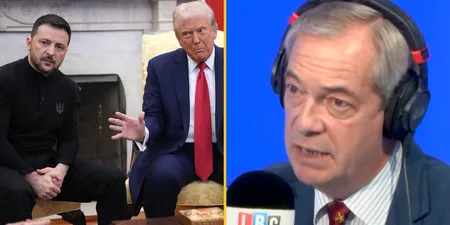How a group of lyrical misfits from New York City shook up the world and created a blueprint for future Hip Hop hall of famers
November 9th 1993 will forever remain a significant day in the Hip Hop calendar. Aside from A Tribe Called Quest releasing their outstanding Midnight Marauders album, it’s also the same day a group of larger-than-life characters from the slums of Shaolin (aka Staten Island) released their debut album and changed the world.
Enter the Wu-Tang (36 Chambers) was that album.
The group? The Wu-Tang Clan, of course.
Sure, we had rap crews before the Wu-Tang came along but this nine-man group from New York were different, they were like the Juice Crew but on steroids. Both individually and as a group, they gave us something to believe in, something to love, something to entertain us, and more importantly, something to be educated by.
Getting stuck into a Wu-Tang album is like opening up your GCSE science paper on test day, it’s overwhelming to begin with but once you settle into it you soon discover it’s worth pushing through it.
36 Chambers in particular is a complex body of work. Coming to fruition after a couple of failed solo attempts by co-founders RZA (formerly Prince Rakeem) and GZA (aka The Genius), the two of them took what they had learned from their previous creative experiments and compiled an album that would go on to become one of the most significant bodies of work in music history and one of the greatest Hip Hop albums ever made.
A product of RZA’s brilliance, his resilience and his never wavering vision that foresaw the group’s global takeover, Enter the Wu-Tang (36 Chambers) was always going to happen.
Forming like Voltron (or Transformers for us Brits), the Wu-Tang Clan was made up of nine key members, each with their own explosive personality and clever alter-ego.
RZA (aka Bobby Digital) is the leader, the brains behind the entire operation. GZA (The Genius) is one of the sharpest lyrically, his metaphors really raised the bar at the time of 36 Chambers being released. Method Man (Johnny Blaze) has one of the most distinctive voices in the game, he’s also the most recognisable member of the Wu. Raekwon (Chef) is one of the pioneers of mafioso rap and his lyrical dexterity is somewhat of a marvel.
Then there’s Ghostface Killah (Tony Starks), a comic book fan who sometimes wears a golden eagle on his arm, he’s an elite MC whose subject matters often involve women and bathtubs. Inspectah Deck (Rebel INS) is one of the Wu’s most intricate MCs, his opening verse on the 1997 single “Triumph” might just feature one of Hip Hop’s greatest opening lines.
And while both U-God (Golden Arms) and Masta Killa (Noodles) are two of the lesser known members of the group, their input has always been an integral part of what the Wu-Tang do – Masta Killa’s only verse on 36 Chambers is on “Da Mystery of Chessboxin’” and the song wouldn’t be the same without it.
There of course is one final member, who unfortunately is no longer with us, and that’s Ol’ Dirty Bastard (ODB, Dirt McGirt). One of the most animated rappers to ever bless the mic, he’s best described as Busta Rhymes-meets-Richard Pryor with a dash of Mick Jagger for good measure. No matter where you are in the world, the second “Shame on a N***a” is played you’ll see people reciting his bars word for word and imitating his disjointed mannerisms that you can’t help but love.
Don’t believe me? Listen to the Wu describe their own personalities on the “Intermission” that follows the Gladys Knight-sampled “Can It Be All So Simple” on 36 Chambers.
With a dark undertone evident throughout, while the lyrical content on 36 Chambers focuses on the life experiences of the individual members, as well as some battle rap-type bragging, there’s a lot more to it than that. Tapping into pop culture, street life and kung-fu movies, there was no other album quite like it at the time.
Punched in the face straight from the jump, as soon as the opening chants of “Bring Da Ruckus” started you were scared shitless – it was more like a sucker punch because you had no idea it was coming. Leading you into a false sense of security, the album starts with some kung-fu soundbites making you think you know where it’s going and then pow, the covers of your speakers were blown off and you couldn’t put them back on until the album finished.
And don’t even get me started on RZA’s production.
Raw and distorted, the pairing of flipped soul samples (think The Dramatics, Gladys Knight & the Pips and Otis Redding) with clips from martial arts movies such as Shaolin and Wu Tang and Ten Tigers of Kwangtung was a stroke of genius, and something we’d never before heard up until this point.
The beats on 36 Chambers complimented each and every member’s voice. As uneasy as the tales they were spitting, the backdrops felt dirty and dusty just like the streets they were describing.
Poverty was very real at this point for the group’s nine members, so of course the sounds contained on 36 Chambers mirrored this. It’s no accident that the album didn’t sound as polished as perhaps it could have, the cheap equipment used to make it is actually a part of its appeal.
A complete contrast from what was going on in Hip Hop at the time, 36 Chambers did away with the jazz-influenced production that groups like A Tribe Called Quest, Jungle Brothers and Brand Nubian were using. Opting instead for loud and brash soundscapes that at times left you feeling like you were stuck in a horror movie, the Wu-Tang got your attention with its brand of gutter digital soul whether you liked it or not.
Whether it was the group’s battle rap bars to the march of “Shame on a N***a”, over its triumphant horns, ill scratches and creepy key arrangements, or my personal favourite, “Da Mystery of Chessboxin’”, where U-God’s opening bars – “Raw, I’ma give it to ya, with no trivia/ Raw like cocaine straight from Bolivia/ My Hip Hop will rock and shock the nation/ Like the Emancipation Proclamation – always get me swinging my arms around like I’m on the set of a Hype Williams video shoot, everything about 36 Chambers is unapologetically intense.
Those not as well versed in Hip Hop culture are often quick to label albums like Enter the Wu-Tang (36 Chambers) as violent because they lack the understanding to comprehend the surroundings the artists behind the music are subject to, or they mistake humour for vulgarity. But there’s no mistaking the intentions of the intro to “Method Man”.
“Yeahhh, torture, motherfucker, what?/ Torture, n***a, what?/ What? I’ll fuckin’, I’ll fuckin’ tie you to a fuckin’ bedpost/ With your ass cheeks spread out and shit, right?/ Put a hanger on a fuckin’ stove and let that shit sit there for like a half hour, take it off and stick it in your ass slow like tsssssss/ Yeah, I’ll fuckin’, yeah, I’ll fuckin’ lay your nuts on a fuckin’ dresser, just your nuts layin’ on a fuckin’ dresser, and bang them shits with a spiked fuckin’ bat.”
I’d never heard anything like it. All I remember is playing it over and over again and pissing myself laughing. Then it proceeded to jump out of the album and into real-life. How could something so graphic become a part of pop culture? Whether it was Dave Chappelle referencing it in an episode of his Chappelle’s Show, or more recently it being recited on an episode of sports debate show Jalen & Jacoby, Meth and Rae’s rap comedy sketch went viral before going viral was a thing.
And let’s not forget how amazing “Method Man” is as a track. Not only does it borrow its famous “M-E-T-H-O-D man” chant from a Hall & Oates record (“Method of Modern Love”), it also gave us a first look at what to expect from one of Hip Hop’s most revered MCs, Clifford Smith (aka Method Man) in a solo capacity – we get a pretty in-depth look at Meth’s talents throughout 36 Chambers as he features on eight of the album’s 13 tracks.
“Protect Ya Neck” is arguably one of the greatest posse cuts ever. One of those tracks that today still has you arguing with your friends about which member had the best verse, over the intermittent screaming synths it’s an all-out assault on the ears that you can’t help but keep pushing replay on.
Not only that, it also contains two of the album’s most referenced quotables: Method Man’s, “It’s the Method Man, for short Mr. Mef/ Movin’ on your left, UH!” and ODB’s, “First things first, man, you’re fuckin’ with the worst/ I’ll be stickin’ pins in your head like a fuckin’ nurse.”
It’s hard to name the album’s finest moment because there are so many. But one record that always comes up in conversation when discussing 36 Chambers stand outs is “C.R.E.A.M.”.
The moment the world became privy to a new slang word for money, “C.R.E.A.M.” is a mantra that remains as relevant today as it did when the Wu fired it off into the atmosphere back in 1993. Over the top of an unmistakable piano run that has been used time and time again to freestyle on, has there ever been a chorus in Hip Hop as prominent as this?
“Cash rules everything around me/ C.R.E.A.M., get the money/ Dollar dollar bill, y’all.”
A landmark release that helped restore New York Hip Hop to its former glory during a time of west coast dominance – artists like Ice-T, N.W.A., Ice Cube and Dr. Dre owned the airwaves – 36 Chambers not only influenced a generation of listeners it also inspired a new wave of east coast artists to experiment with their music making and not be afraid to tell their story no matter how off the tried and tested path it may have been.
Mobb Deep, Onyx, The Notorious B.I.G., Nas, JAY-Z, these are just some of the artists the Wu-Tang inspired with their debut album. Listen to Mobb Deep and Onyx’s early albums that were released before 36 Chambers and then listen to the albums they released after. Makes sense now, right?
Also looking at some of today’s newer artists, it’s evident that Wu-Tang Clan are continually inspiring. Odd Future, TDE – Kendrick Lamar’s Damn tour looks like a Wu-Tang production – Dreamville, Jamla, the list goes on and on.
https://youtu.be/HpQmFfdYFzY
So what’s the significance of the album’s title?
If you look up 36 Chambers’ Wikipedia page it’ll reel off a ton of different theories. With everything from human pressure points to Five Percent philosophies, as well as various numerical-based ideas discussed, the one thing that is for certain is that Enter the Wu-Tang (36 Chambers) was inspired by the 1978 kung-fu movie The 36th Chamber of Shaolin.
36 Chambers was the start of something much bigger than just the music too. Wu-Tang Clan became a globally recognisable brand from the moment their debut album hit shelves. The ‘W’ logo became a stamp of credibility, if you knew the Wu-Tang you were considered credible and up on what was going on in pop culture at the time.
Like with Snoop Dogg, even your grandmother has heard of the Wu-Tang – even if she’s not heard any of their music. Clothes, shoes, video games, Christmas cards, toys, you name it, they had it all. The group transcended rap, which at the time as a genre was still trying to break free from the shackles of underground status.
Rap was pop’s best kept secret until 36 Chambers was released.
For me personally, 36 Chambers opened my eyes up to a world way beyond the four walls I resided, at the age of 10 it was something I could never truly understand because my upbringing was a far cry from what the Wu-Tang were describing in their raps. But again it was an education for me, it was a way for me to cut my teeth understanding a new culture and I loved every second of it.
I learned that comic books weren’t just for kids. I learned that I quite liked kung-fu. I learned that the game of chess is like a sword fight. I also learned that cash ruled everything around me. And most importantly, I learned that…
Wu-Tang Clan ain’t nuthing ta fuck wit!










































